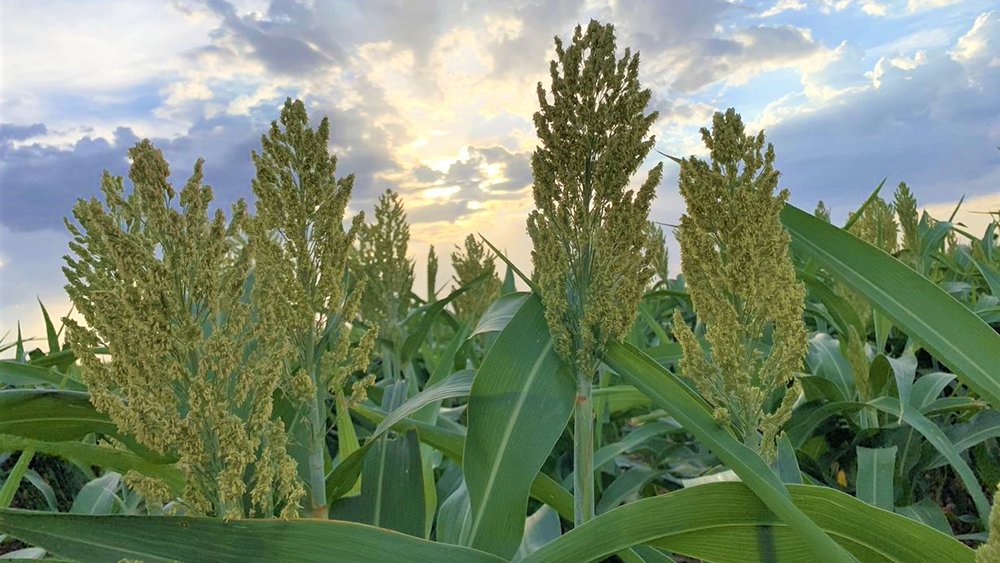Call for Abstracts

Submit your abstracts for a chance to showcase your poster or oral presentation at the conference! The Scientific Committee will evaluate the abstracts and will confirm the type of presentation and scientific theme and/or session selected.
Submission Deadline
11:59 PM US – Central Standard Time on Tuesday, March 31, 2026.
Guidelines
Abstracts should be submitted in English, the official language of the conference.
Maximum 300 words.
Separate boxes are provided on the abstract submission portal for background/objectives, results, discussion, and conclusion.
Abstracts may be edited/updated within the conference software until the contest dealine on March 31, 2026.
Research Themes
Abstracts should adhere to one of the following themes. Keywords are not exhaustive and are meant to provide examples of the types of research that fit in each category.
Reduce yield gaps and enhance resilience to changing environments
Keywords: Agronomy microbiome, Genotype by Environment by Management (GxExM) interactions, ideotyping, weeds, insects and diseases, problematic soils, abiotic stresses, participatory varietal selection
Capturing sorghum yield potential leveraging advances in genomics for enhancing yield gain and stress resilience
Keywords: Breeding, genetics, phenomics, genomic selection, genomics, gene editing, transformation, functional validation, trait physiology, trait discovery, Genotype by Environment by Management (GxExM) interactions, weeds, insects and diseases, problematic soils, abiotic stresses (heat, drought, salinity and others)
Managing grain, forage, and biomass sorghum production to optimize yield, quality and systems resilience to maximize economic returns
Keywords: Agronomy, yield gaps, production, cropping systems, agro-ecosystems, quality, nutrients, input dynamics, phenomics, physiological growth and development, crop modeling, weeds, soil and plant microbiome, GxExM interactions, intercropping, insects and diseases
Emerging technologies and their application potential - commercialization opportunities for the sorghum industry
Keywords: Sensors, remote sensing, AI, big data, data analytics, robotics, machine and deep learning, weather forecasting, bio-engineering, advanced microscopy, insurance, new weed control options, biostimulants
Exploring new products and novel horizons for human, livestock and industrial applications
Keywords: Human and livestock gut microbiomes, poly-phenols, antioxidants, new food products, new feed products, post harvest management and processing, bio-products, biofuels
Strengthening value chains, seed systems and market opportunities to build more resilient and profitable sorghum industries
Keywords: Biofuels, carbon markets, life cycle analysis, carbon sequestration, regional/global seed systems, socio-economic modeling, insurance
Oral Presentations
- Selected speakers will be assigned 20 minutes to present their research (2 min introduction, 15 min talk and 3 minutes for questions).
- Selected presenters should send their biography (maximum 150 words) by email to GlobalSorghumConference@ttu.edu (please mention your abstract number).
- Detailed information will be e-mailed upon acceptance of your abstract.
- For any additional information, please contact GlobalSorghumConference@ttu.edu.
Posters
The Scientific Committee will evaluate the abstracts and and will confirm/reject your poster. Presenters are responsible for providing the poster for display at the conference.
Poster Design Specifications
- Document orientation for the poster should be set to landscape.
- Poster size is 36”h x 48”w.
- Text in the poster should be readable from 6 feet away, including text in the figures. No text should be smaller than a 20-point font. The title should be much larger and readable from a distance (12 feet or more).
- Use bold, sans serif fonts.
- Use dark letters on light backgrounds.
- Use color carefully; very bright colors can easily fatigue the reader. Stick to a theme of 2-3 colors.
Poster Content Requirements
Each poster should include:
- Title
- Authors (Contributors and Institutional affiliations)
- Abstract/Introduction (Placed at the upper left in large typeset)
- Objectives
- Methods/Approach
- Results
- Conclusions/Future direction
- References
- Acknowledgements
Poster Development Guidelines
- Include enough background/contextual information for a non-specialist to understand your work and its significance.
- Discuss the implications of this research in your field and what it means to the public at large.
- Proof-read your poster for proper grammar and spelling.
- Ensure symbols, tables, and mathematical equations are correctly displayed.
- Ensure images are properly embedded (not covering any text).
Global Sorghum Conference
-
Address
Texas Tech University, 2500 Broadway, Lubbock, TX 79409 -
Phone
806.742.2011 -
Email
vpr.communications@ttu.edu
